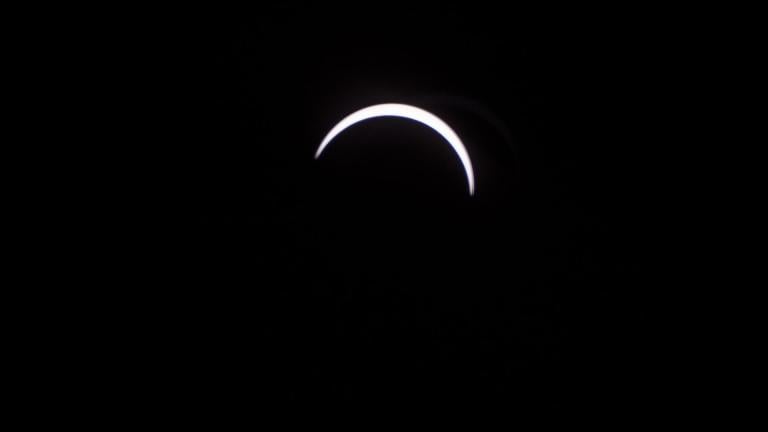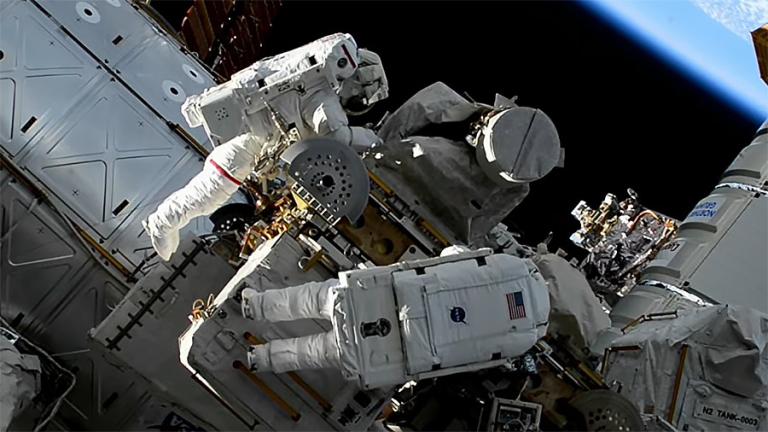NASA’s Ingenuity Mars helicopter is the first aircraft humankind has ever created that is capable of powered, controlled flight on another world.
It was designed as a technology demonstration with a goal of achieving up to five flights within a month. It has done that and far, far more. Just this past weekend it completed its 36th flight on the Red Planet.
Below is a conversation with Teddy Tzanetos, team lead for NASA’s Ingenuity Mars helicopter project.
WTTW News: Clearly Ingenuity has been a tremendous success, but what were the main challenges you and your team faced when trying to develop a helicopter that could fly on Mars.
Teddy Tzanetos: So first and foremost, flying on Mars is difficult because of the environment. The air density, it’s 1% that of Earth’s. So, that means that there’s almost no air to push off of to try and fly. And that means that your vehicle therefore needs to do a couple of special things. First off, it needs to be very, very light. Ingenuity weighs just 1.8 kilos or four pounds. You need to spin your blades very, very quickly. We spin around 2,800 revolutions per minute compared to a helicopter on Earth that would just be spinning at a few 100 revolutions per minute.
And the other challenge is that it’s very cold on Mars and we need to be self-sufficient. Once Ingenuity was separated from Perseverance, there was no going back. We can’t go back to recharge the batteries, do a health check or anything. This small little lightweight aircraft needed to be completely self-sufficient, and that means the thermal energy balance. How much you recharge every day on your solar panel. How much you keep in your batteries. And then, how much do you expend overnight to keep your batteries and keep the entire electronics enclosure warm enough throughout the night. Those are the big environmental challenges. And then of course, because Mars is so far away you can’t [control the flight with a] joystick, right? It’s about a 10 minute, 15 minute round trip delay [to send a message to the craft]. So you need to build in all the autonomy, all the capability on board so that she can navigate, deal with a gust of wind, deal with unplanned for circumstances all on her own.
I was surprised to read that you use a lot of off-the-shelf technology on Ingenuity. I would have assumed that you would have to build everything from scratch especially for this mission. Was that a deliberate choice or was it just a means of keeping the cost down?
Tzanetos: So that was dictated by physics. It was also dictated by the style of mission that we were. We were a separate project (from the Perseverance mission). And we were we were a technology demonstration. That term means high risk, high reward and minimal budget. But that means your budget is not as high as a large flagship mission. So that means if we can save costs by using off-the-shelf parts we will.
But there are other aspects of the cost design that was like I said, dictated by physics. If you look at the Perseverance computer processor, it’s many, many kilos and it’s radiation hardened. It’s designed to withstand the harsh environment on Mars. But because we’re flying aircraft in 1% the density of Earth’s atmosphere, we needed a lightweight solution. So we took advantage of the miniaturization of cellphone technology and all of the commercial off-the-shelf advances that we’ve had in radios, in batteries, lithium-ion technology. And we happily integrated those into the design and took advantage of that.
 This processed image of NASA’s Ingenuity Mars Helicopter was taken by the Mastcam-Z instrument of the Perseverance rover on June 15, 2021. (Courtesy of NASA)
This processed image of NASA’s Ingenuity Mars Helicopter was taken by the Mastcam-Z instrument of the Perseverance rover on June 15, 2021. (Courtesy of NASA)
With Ingenuity’s first flight, what was that experience like for you? I imagine you must have been nervous or even terrified. What combination of emotions did you go through with that first flight?
Tzanetos: It was a dream come true for you know 30 seconds of celebration. And then, it’s very funny to look back on it now, we’re all excited and clapping and celebrating because you know, this is the moment that a couple of dozen people have been working on now for the last five or six years. And for some people, they’ve been thinking about this since the ‘90s. But getting to that point and seeing the helicopter fly was a dream come true.
And then after that 30 seconds of celebration, it was back to business. That’s flight No. 1. Let’s get ready for flight No. 2. And there was a lot of work I needed to get done to confirm that the vehicle was healthy because we still have a mission on our hands. Primary goal — we’ve succeeded. Now, let’s go as far as we can with this beautiful little helicopter that we have flying on Mars.
Tell me a little bit about how you plan the flight, because I imagine that given you don’t have real-time control that must be something that you have to plan very carefully.
Tzanetos: Yes. Every flight is pre-planned and simulated on the ground here on Earth. So we have orbital maps of the surface of Mars and we pick our landing sites based off of those orbital maps to find safe landing locations. And we chart those flights according to what our latest plans are.
If the Perseverance rover team or the science team is interested in the helicopter scouting on an outcrop, we can plan waypoints. We simulate the physics of that flight on the ground here and make sure that everything works out with the positions and velocities and accelerations. And then we generate that sequence. We send it up to the rover, the helicopter base station and there's a little antenna that sends it to the helicopter. The helicopter executes the sequence one way point at a time goes down to land and then we start the process all over again.
The initial mission was to do up to five flights in a month. You recently completed Ingenuity’s 36th flight. What’s next?
Tzanetos: Just this weekend we had our most recent flight and the baby is still healthy. We’ve recently completed a flight software upgrade to breathe new life into Ingenuity. We’ve given her some new capabilities to fly over the challenging terrain ahead of us at the river delta. And what’s next for our mission is that we’re going to fly up this new challenging terrain. Continue scouting for the Perseverance rover and find areas of interest and really keep pushing the limits of what this four pound helicopter can do. And we’re going to try and keep pushing all these limits as long as Ingenuity is still healthy.
And just finally, in terms of this demonstration of technology, could it be scaled up? Do you see a future where we could have astronauts zipping around in helicopters on Mars?
Tzanetos: Absolutely. That is that is my dream. One day to see fleets of helicopters zipping around astronauts on Mars. I know for certain that there will be that day and our foundational work right now is helping accelerate that. And now we have our sample recovery helicopters that are following in Ingenuity’s footsteps. We are going to build two Ingenuity class helicopters for the next mission to Mars to act as a backup to help the sample return mission.
If you would like to know more about NASA’s space missions, the Adler Planetarium is hosting a special Adler at Night event on Wednesday, Dec. 14. Space scientists from around the country, including many from NASA, will talk STEM activities, Earth science and spacecraft missions.








